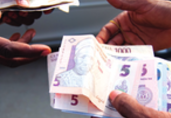Saudi Arabia’s economy looks set for a period of sustained growth, with oil revenues remaining high, non-hydrocarbons exports on the rise and the effects of a massive investment programme by the state starting to kick in.
Displaying 6619 - 6624 of 6749
Economic update | Saudi Arabia: Economic development
12 Sep 2011
Economic update | Turkey: Taking action
1 Sep 2011
The central bank (CB) took several measures in August in an effort to reverse the sharp decline of the lira against global benchmark currencies. Since November 2010, the lira has lost approximately one-quarter of its value, and slid 13.5% against the US dollar so far this year, as international investors have steadily removed their money from Turkish markets.
Economic update | Nigeria: Targeting investment
25 Aug 2011
The prime functions of a newly revamped ministry are to reverse a decline in foreign direct investment (FDI) and to boost trade. On July 11, the federal government said it would replace the Ministry of Commerce and Industry with the Ministry of Trade and Investment (MTI). The new ministry, to be headed by Olusegun Aganga, the former minister of finance, will lead Nigeria’s efforts to increase private investment from both domestic and international sources, as well as to expand the manufacturing base and the number of local jobs.
Economic update | Maroc : Sur la voie du progrès
22 Aug 2011
Malgré les troubles régionaux et la hausse des prix des denrées, qui creusent le déficit de la balance commerciale depuis le début de l’exercice, divers facteurs laissent entrevoir des perspectives encourageantes pour l’économie marocaine en 2011, notamment une excellente récolte et une diversification continue. Les chiffres de 2010 et des cinq premiers mois de 2011 mettent également en évidence un taux d'inflation resté particulièrement bas.
Economic update | Kuwait: Fiscal education
17 Aug 2011
Strong financial indicators in Kuwait have seen the country rewarded by a ratings upgrade. On July 20 Standard & Poor’s (S&P) announced that it was raising Kuwait’s long-term sovereign credit rating from AA- to AA, with a stable outlook. According to the credit rating agency, the economy’s strengths include high GDP per capita and healthy fiscal and external balance sheets, factors that have been accorded greater weight under S&P’s recently revised methodology for rating sovereign credit risk.
Economic update | Oman: Bouncing back
12 Aug 2011
The lifting of a rating agency’s temporary cloud over the Oman economy and a healthy forecast for GDP growth have combined to create an air of optimism in the Sultanate. On July 20 Standard & Poor’s removed Oman from CreditWatch, with the country’s long-term local and foreign currency rating at A, and the short-term rating at A-1.






